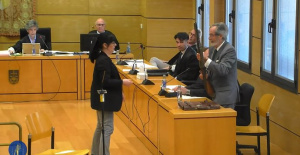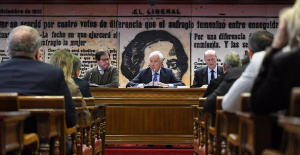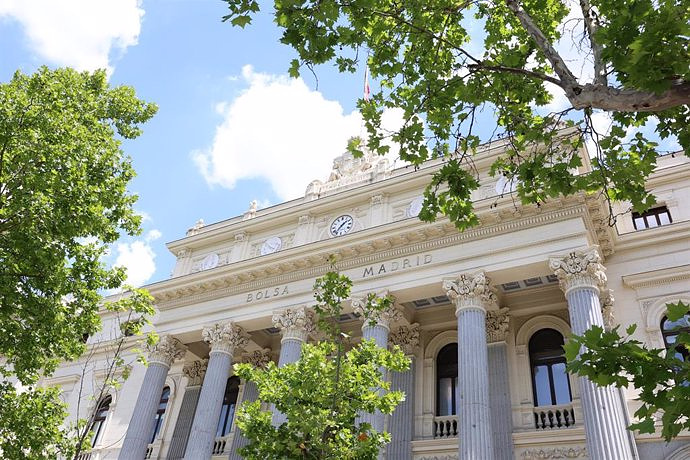Included in her study, she discovered a letter dated Oct. 28, 1927, at the National Archives which was clarified as a memo to both Treasury Secretary Andrew Mellon from his team, indicating subjects for the shortly to be released small-size United States paper money.
Another denominations have handwritten fluctuations in pen. Initially, the $20 note was to possess Grover Cleveland's portrait on the surface. Jackson's name is crossed out on the $1,000 notice and substituted with that of Cleveland.
There was just 1 shift to the backs of these notes.
Dr. Franklin Noll, former historian for the Bureau of Engraving and Printing, has witnessed public documents which provide greater insight into this specific memorandum and to the background of the growth of small-size notes generally.
The memo came from BEP Director Alvin W. Hall, who served in this place from 1924 to 1954. The handwritten notations, as mentioned, are Mellon's.
Considering that the very first small-size notes are Series 1928 problems, while the overdue 1927 memo has been nearly last moment, the movement to smaller dimensions notes, Noll states, wasn't. The idea started in the days before World War I, with notions which were kicked out of a Treasury secretary to another but not listened upon before the Mellon years.
In 1916, the short-lived Agency of Efficiency was set. It had been the executive branch's first employees bureau and, states Mordecai Lee at Institutionalizing Congress and the Presidency: The U.S. Bureau of Efficiency, 1916--1933, it had been tasked with bringing the principles of scientific management into the national authorities.
One of its workers was Hall. The young accountant became a researcher to the agency in 1920 and in 1922 was delegated to a committee created by Mellon to assess the operations of the BEP. He had been appointed as leader of the BEP's preparation unit and became manager in 1924 at age 36.
In terms of the new currency, you will find many meetings and lots of thoughts that Noll characterizes as suspended in a logical strategy. Initially that included (1) that the most well-known persons ought to be about the lower denominations in order that they'd be recognized immediately; (2) they ought to be presidents, if possible; and (3) when the denominations were lined up side-by-side, the portraits must seem significantly different. For example, portraits facing left, right, and forwards; beards and no beards; and apparel from other eras.
The initial proposal by the Bureau of Efficiency called for George Washington to look about the $1 notes, Woodrow Wilson about the $2 denomination, and Thomas Jefferson and Abraham Lincoln on additional lower denominations. Alexander Hamilton, the first secretary of the Treasury, was on one of those higher denominations. It did not work out this way.
Mellon had other components to think about, possibly also in the name of efficiency. Among the essential ones was that the BEP was subsequently printing large-size Series 1914 Federal Reserve notes and had all of the dishes. The atmosphere was that rather than reinventing the wheel, so why don't you use most of these portraits when potential? Jackson was transferred from the $10 notes into the $20 notes; Cleveland in the $20 into the $1,000 notes; and Hamilton in the $1,000 denomination into the $10 denomination. The newest Benjamin Franklin portrait, based on a painting by Joseph-Siffred Duplessis, fit in better with the manner of another notes compared to the one about the large-size $100 notes. There was also a feeling in the time that three-quarters-facing portraits were more difficult to replicate than profiles.
An average of President Wilson substituted Chief Justice John Marshall about the 500 notes.
In terms of the vignette of the Bureau of Engraving and Printing construction proposed for the $100 denomination, it was not an ego trip by Hall.
There's not any list of why Mellon created the modifications on the memo.

 Exploring Cardano: Inner Workings and Advantages of this Cryptocurrency
Exploring Cardano: Inner Workings and Advantages of this Cryptocurrency Seville.- Economy.- Innova.- STSA inaugurates its new painting and sealing hangar in San Pablo, for 18 million
Seville.- Economy.- Innova.- STSA inaugurates its new painting and sealing hangar in San Pablo, for 18 million Innova.- More than 300 volunteers join the Andalucía Compromiso Digital network in one month to facilitate access to ICT
Innova.- More than 300 volunteers join the Andalucía Compromiso Digital network in one month to facilitate access to ICT Innova.-AMP.- Ayesa acquires 51% of Sadiel, which will create new technological engineering products and expand markets
Innova.-AMP.- Ayesa acquires 51% of Sadiel, which will create new technological engineering products and expand markets Historical results of the 2024 Basque elections, municipality by municipality
Historical results of the 2024 Basque elections, municipality by municipality Iran assures that any action by Israel will have an "immediate and highest level" response: "They will regret it"
Iran assures that any action by Israel will have an "immediate and highest level" response: "They will regret it" The Ciudad Real Court sentences the man who killed a thief with two shots in his home to 6 years
The Ciudad Real Court sentences the man who killed a thief with two shots in his home to 6 years PP and PSOE clash in the Senate over Koldo's appearance after a socialist writing on a work plan
PP and PSOE clash in the Senate over Koldo's appearance after a socialist writing on a work plan How Blockchain in being used to shape the future
How Blockchain in being used to shape the future Not just BTC and ETH: Here Are Some More Interesting Coins Worth Focusing on
Not just BTC and ETH: Here Are Some More Interesting Coins Worth Focusing on Valencia displays its "innovative and technological potential" at the Emerge Americas event in Miami
Valencia displays its "innovative and technological potential" at the Emerge Americas event in Miami The CSIC incorporates the challenges of robotics, nanotechnology and AI in the new strategic plan for biomedicine
The CSIC incorporates the challenges of robotics, nanotechnology and AI in the new strategic plan for biomedicine Innovation allocates 9.1 million to train 74,000 people and guarantee digital inclusion
Innovation allocates 9.1 million to train 74,000 people and guarantee digital inclusion LIFE SPOT manages to develop new green treatments that eliminate groundwater contamination
LIFE SPOT manages to develop new green treatments that eliminate groundwater contamination A million people demonstrate in France against Macron's pension reform
A million people demonstrate in France against Macron's pension reform Russia launches several missiles against "critical infrastructure" in the city of Zaporizhia
Russia launches several missiles against "critical infrastructure" in the city of Zaporizhia A "procession" remembers the dead of the Calabria shipwreck as bodies continue to wash up on the shore
A "procession" remembers the dead of the Calabria shipwreck as bodies continue to wash up on the shore Prison sentences handed down for three prominent Hong Kong pro-democracy activists
Prison sentences handed down for three prominent Hong Kong pro-democracy activists ETH continues to leave trading platforms, Ethereum balance on exchanges lowest in 3 years
ETH continues to leave trading platforms, Ethereum balance on exchanges lowest in 3 years Investors invest $450 million in Consensys, Ethereum incubator now valued at $7 billion
Investors invest $450 million in Consensys, Ethereum incubator now valued at $7 billion Alchemy Integrates Ethereum L2 Product Starknet to Enhance Web3 Scalability at a Price 100x Lower Than L1 Fees
Alchemy Integrates Ethereum L2 Product Starknet to Enhance Web3 Scalability at a Price 100x Lower Than L1 Fees Mining Report: Bitcoin's Electricity Consumption Declines by 25% in Q1 2022
Mining Report: Bitcoin's Electricity Consumption Declines by 25% in Q1 2022 Oil-to-Bitcoin Mining Firm Crusoe Energy Systems Raised $505 Million
Oil-to-Bitcoin Mining Firm Crusoe Energy Systems Raised $505 Million Microbt reveals the latest Bitcoin mining rigs -- Machines produce up to 126 TH/s with custom 5nm chip design
Microbt reveals the latest Bitcoin mining rigs -- Machines produce up to 126 TH/s with custom 5nm chip design Bitcoin's Mining Difficulty Hits a Lifetime High, With More Than 90% of BTC Supply Issued
Bitcoin's Mining Difficulty Hits a Lifetime High, With More Than 90% of BTC Supply Issued The Biggest Movers are Near, EOS, and RUNE during Friday's Selloff
The Biggest Movers are Near, EOS, and RUNE during Friday's Selloff Global Markets Spooked by a Hawkish Fed and Covid, Stocks and Crypto Gain After Musk Buys Twitter
Global Markets Spooked by a Hawkish Fed and Covid, Stocks and Crypto Gain After Musk Buys Twitter Bitso to offset carbon emissions from the Trading Platform's ERC20, ETH, and BTC Transactions
Bitso to offset carbon emissions from the Trading Platform's ERC20, ETH, and BTC Transactions Draftkings Announces 2022 College Hoops NFT Selection for March Madness
Draftkings Announces 2022 College Hoops NFT Selection for March Madness


























